6.8 /10 1 Votes
7/10 TV Original language(s) English No. of episodes 363 (inc. 58 specials) Final episode date 20 December 2007 Number of episodes 363 (inc. 58 specials) | 6.6/10 IMDb Country of origin United Kingdom No. of series 23 First episode date 2 October 1971 | |||||||||||||||||||||||||||||||||
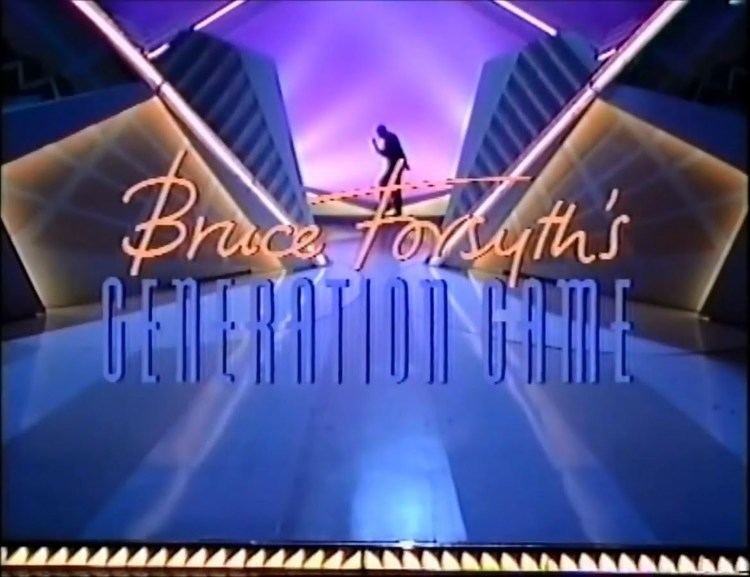 | ||||||||||||||||||||||||||||||||||
Also known as Bruce Forsyth and the Generation Game (1971–77)Larry Grayson's Generation Game (1978–82)Bruce Forsyth's Generation Game (1990–94)Jim Davidson's Generation Game (1995–2002) Starring Anthea Redfern (1971–77)Isla St Clair (1978–81)Rosemarie Ford (1990–94)Sally Meen (1995–96)Melanie Stace (1996–2001)Lea Kristensen (2001–02) Presented by Bruce Forsyth (1971–1977, 1990–1994), Larry Grayson (1978–1982), Jim Davidson (1995–2002) Nominations National Television Award for Most Popular Entertainment Presenter Similar Game show, Dalli Dalli, Play Your Cards Right, Big Break, Blankety Blank | ||||||||||||||||||||||||||||||||||
The Generation Game is a British game show produced by the BBC in which four teams of two people from the same family, but different generations, competed to win prizes.
Contents
- History
- The game
- Catchphrases
- Hostesses
- Board Games
- Books
- Revivals
- International versions
- In popular culture
- References
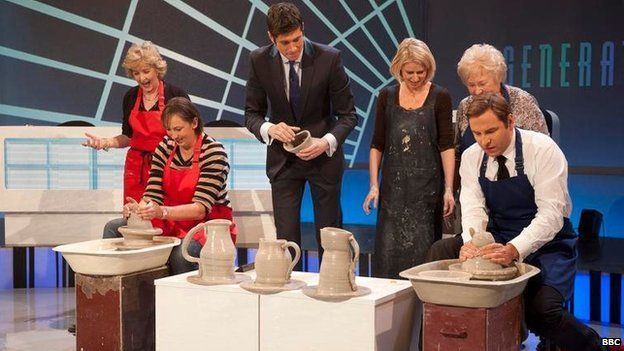
History
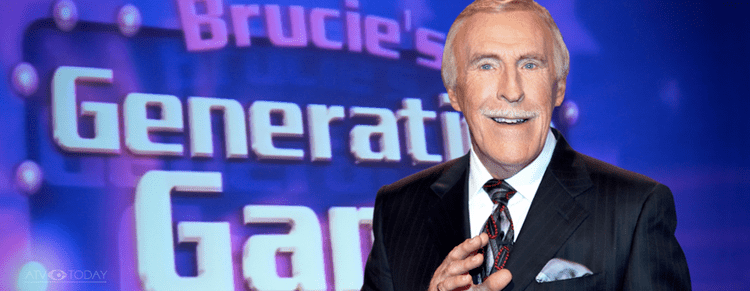
The show was based on the Dutch TV show Één van de acht ("One of the Eight"), the format devised in 1969 by Theo Uittenbogaard for VARA Television. Mies Bouwman, a Dutch talk show host and presenter of the show, came up with the idea of the conveyor belt. She had seen it on a German programme and wanted to incorporate it into the show.
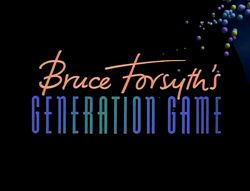
Another antecedent for the game show was Sunday Night at the London Palladium on ATV, which had a game called Beat the Clock, taken from an American game show of the same name. It featured married couples playing silly games within a certain time to win prize money. This was hosted by Bruce Forsyth from 1958, and he took the idea with him when he went over to the BBC.
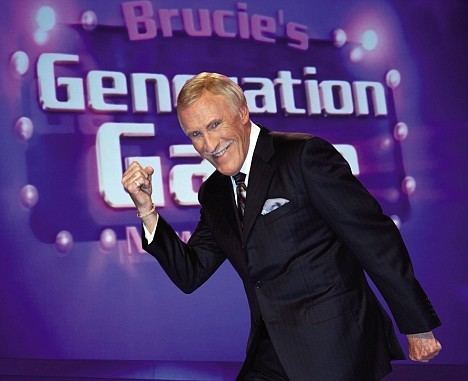
During the 1970s, game shows became more popular and started to replace expensive variety shows. Creating new studio shows was cheaper than hiring a theatre and paying for long rehearsals and a large orchestra, and could secure a similar number of viewers. With less money for their own productions, a game show seemed the obvious idea for ITV. As a result, many variety performers were recruited for game shows. The BBC, suffering poor ratings, decided to make its own game show. Bill Cotton, the BBC's Head of Light Entertainment, believed that Forsyth was best for the job. For years, The Generation Game was one of the strongest shows in the BBC's Saturday night line-up, and became the number-one game show on British television during the 1970s, regularly gaining over 21 million viewers. However, things were about to change. Desperate to end the BBC's long-running ratings success on a Saturday night, London Weekend Television offered Forsyth a chance to change channel to host The Big Night.
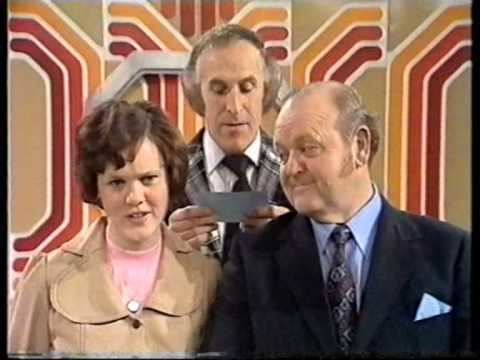
Alan Boyd, producer of The Generation Game at the time, remembers that there were many proposals as to who should take over. However, he felt he did not want the new programme to be comparable to Forsyth's Generation Game (he did not want the audience to be able to compare the two shows to think that Bruce was better or that the new host was better), so he cast Larry Grayson to take over, with a new theme tune and scenery, and a new co-host, Isla St Clair. It worked, as The Big Night failed to beat The Generation Game and was off the air within three months.
The show reached its peak under Grayson. It attracted an audience of 25 million on one occasion, when a strike blacked out the ITV network, meaning the two BBC channels were the only ones the public could watch. Grayson's apparent incompetence and inability to remember what was going on was carefully contrived.
A special edition of The Generation Game with Vernon Kay hosting aired on 5 March 2011 in aid of Comic Relief during the BBC's 24 Hour Panel People. David Walliams competed with his mother Kathleen. The other team consisted of Miranda Hart and Patricia Hodge, who play mother and daughter in the sitcom Miranda.
The game
There were eight competitors, hence the catchphrase "Let's meet the eight who are going to generate" used in earlier series by Bruce Forsyth. In the first two rounds, two couples would compete against each other in two games. One game usually involved first seeing a skilled professional construct or perform something, such as pottery or dancing. The contestants would then attempt to do the same, and a score would be given by the professional. The other game usually involved more of a quiz element, such as identifying pieces of music. At the end of each of the first two rounds, the couple with the lower score was eliminated.
The two highest-scoring couples then competed against each other in the final (or End Game as Larry Grayson called it). This was often a big set-piece performance; in the series presented by Bruce Forsyth it was usually a drama or farce, in later programmes a musical or dance performance. The couple that scored the highest went through to the final 'conveyor belt'. Originally, this was scored the same way in the first rounds, but when Davidson took over, the winner was decided by an audience vote.
At the end of the show, one member (or in later series both members) of the victorious team watched prizes pass on a conveyor belt, and then won as many as could be recalled in 45 seconds (20 seconds per teammate during the second Forsyth era), with some items awarding a bonus prize if the contestant or team could recall that item. A trademark of the show was that a cuddly toy was always among the prizes. This led to an affectionate joke: "Dinner service...fondue set...Cuddly toy! Cuddly toy!", which is often quoted whenever the show is mentioned. The audience and the host would shout out the names of the prizes, especially in later series, allowing the contestants to carry away large numbers of items. Towards the end of the Davidson run, an added twist involved four prizes being referred to as "phantom prizes", if the contestant was to mention those, gunge would be hurled at them every time one was recalled.
In the Davidson run, if contestants correctly recalled 15 of the 20 prizes in 45 (later 60) seconds, they won the lot plus the star prize, usually a holiday.
Catchphrases
The show introduced a number of catchphrases, including Bruce Forsyth's "Didn't he/she/they do well?", "Let's meet the eight who are going to generate", and "Let's have a look at the old scoreboard". Later, when the show was revived, Forsyth's assistant was Rosemarie Ford, so the catchphrase was amended to "What's on the board, Miss Ford?". Forsyth always opened the show with "Nice to see you, to see you ..." to which the audience would shout "Nice!", a catchphrase that Forsyth retains. Others included "Good game, good game," "I hope you're playing this at home," and "Give us a twirl," which was said to hostess Anthea Redfern to show off her dress.
Grayson supplied his own catchphrases, including "Shut that door!", "What a gay day!" and "Seems like a nice boy!" Scores were preceded by "What are the scores on the doors?" to which St Clair would reply "The names in the frames say..." before announcing them. After the conveyor belt finale, Grayson would say "What a lot you've got... you have got a lot!" but he abandoned this after his second season as it did not register with the public. Grayson and St Clair apparently had a strong bond; Grayson always introduced her at the start of each show as "my lovely Isla" and "my favourite girl, my Saturday girl." She once referred to them as being "like a couple of naughty sisters."
Jim Davidson would later present but no real catchphrases were used.
Hostesses
Each host of The Generation Game was joined by a female hostess, who brought the contestants on stage, handed out the prizes and often joined in the games. The first was Anthea Redfern also known as Lin Li, who began an affair with host Forsyth and married him during the series' run. When she was absent on maternity leave, actress Jenny Lee Wright stood in for a number of shows. Isla St. Clair was Grayson's hostess throughout his tenure on the show. Rosemarie Ford supported Forsyth on his second stint as host. Sally Meen, Melanie Stace and Leah Christiansen were Davidson's hostesses.
Board Games
(Strawberry Fayre era)
In 1975, Strawberry Fayre and Denys Fisher published a board game (simply called Generation Game with host Bruce Forsyth on the cover) featuring a three-dimensional diorama of the set, a working countdown clock and the famous sliding doors.
(Rainbow Games era)
In 1990, Rainbow Games published another board game (only this time as Bruce Forsyth's Generation Game still with host Bruce Forsyth on the cover) Featuring 20 fun packed games with over 150 variations for all the family. featuring: Caught in the Act, Making Faces, Quick Draw and The Grand Prize Game with a chance to win Bruce's Surprise.
Books
(Vermilion era)
in 1992, a book called Bruce Forsyth's Generation Game Book: Games, Quizzes, and D-I-Y (Do It Yourself) Fun for All the Family was published by Vermillion. Where it takes the reader on an intriguing behind-the-scenes tour in this book of the programme. Also included is a varied selection of the best games, quizzes and DIY ideas which have been featured on the show including how to do the ballroom dance, make an origami butterfly, identify unusual objects and guess the celebrity in disguise.
Revivals
The BBC were planning on reviving the show with Paul O'Grady as its new presenter in 2004. Filming two non-broadcast pilot episodes in 2003, both O'Grady and the production team were unhappy with the result, with O'Grady leaving the project. Graham Norton hosted a one-off special at Christmas 2005 featuring celebrity contestants - this was titled "Generation Fame". At the time it was widely suggested that this was being treated as the pilot for a potential series; however, only the one edition has to date been screened.
The Generation Game returned in 2007 under the title Brucie's Generation Game: Now and Then broadcast on UKTV Gold. This version was a retrospective of earlier editions, similar to the digital channel's Wogan and Jim'll Fix It revivals around the same time.
The Generation Game returned another time in 2011 for Comic Relief in 24 Hour Panel People with Miranda Hart on one team and David Walliams on the other team; Vernon Kay was the host of that one, starting the show with Brucie's trademark pose and catchphrase.
On 20 April 2014, it was announced that comedian Miranda Hart (who appeared on the 2011 charity special) was in "early talks" with the BBC about hosting a revived version of the show. A pilot episode was filmed before Christmas that year but the controller of the channel, Charlotte Moore, revealed in August 2015 that the project was “very much on hold" due to Hart wanting to concentrate on her acting and writing career.
International versions
In addition to the original Dutch version and long-running British version, in 2008 a South African version of the show was made, hosted by comedian Barry Hilton together with actress/presenter Cindy Nkabinde on channel SABC 2.
There was also a Swedish version, Tjocka Släkten, presented by Lasse Berghagen and Inga Gill.
